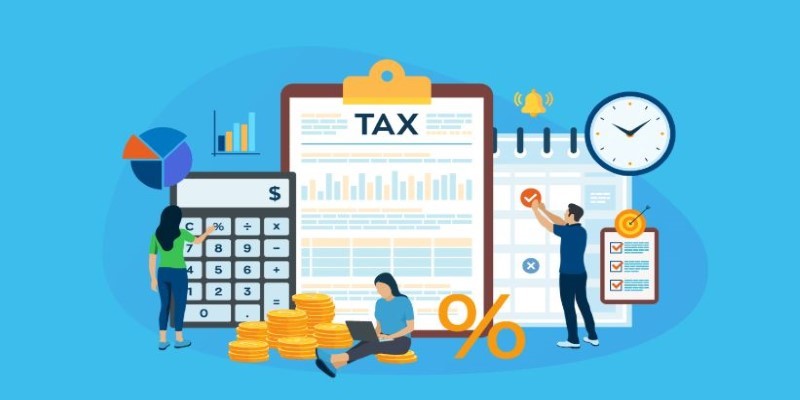Incentive Stock Options and the AMT: What You Should Know
People who own incentive stock options (ISOs) need to understand their tax implications which especially affect Alternative Minimum Tax (AMT). ISOs allow employees to acquire company stock at reduced prices although their tax-specific rules might create unexpected surprises. For some taxpayers when they exercise their options the AMT operates as a distinct tax system. Fundamental tax knowledge supports better planning decisions that protect from surprise tax payments.
What are Incentive Stock Options (ISOs)?

Employees receive Incentive stock options (ISOs) from their employers but these options exclude independent contractors and consultants. Many companies choose Incentive Stock Options due to their taxation benefits yet need to understand their governing rules. To exercise your ISOs properly you must first satisfy the specified vesting requirement which dictates the minimum time period you must work for the company.
How Do ISOs Work?
When you receive ISOs, you are given the right to purchase company stock at a predetermined price, known as the strike price. This price is usually lower than the current market value of the stock. The options have a set expiration date, after which they become worthless if not exercised.
To exercise your ISOs, you must pay the strike price and purchase the stock. This can be done either by paying cash or using a stock-for-stock exchange, where you exchange shares of company stock that you already own for the new shares obtained through exercising your options.
Tax Implications of Exercising ISOs
When you exercise your ISOs, there are no tax consequences at that time (unless you are subject to the AMT, which will be discussed later). However, when you sell the stock acquired through exercising your options, there may be tax implications depending on how long you hold onto the stock.
If you hold onto the stock for at least one year after exercising, any profit made from the sale is taxed at the long-term capital gains rate, which is typically lower than ordinary income tax rates. If you sell the stock before one year has passed since exercising, any profit will be taxed as ordinary income.
What is the Alternative Minimum Tax (AMT)?
The Alternative Minimum Tax (AMT) was designed to ensure that high-income individuals and certain corporations pay a baseline level of taxes, regardless of the deductions or credits they claim. Operating as a parallel tax system, the AMT follows its own distinct rules and calculations, separate from the standard tax framework.
How Do ISOs Affect the AMT?
ISOs can trigger the AMT because they are considered a preference item for the purposes of calculating the tax. This means that when you exercise your ISOs, the difference between the strike price and the stock's fair market value is added to your taxable income for AMT purposes.
If you end up being subject to the AMT, you may owe additional taxes on top of what you would normally pay under regular tax rules. This is important to keep in mind when deciding when and how to exercise your ISOs.
Strategies to Manage the AMT When Exercising ISOs
- Consider Exercising ISOs in a Year with Lower Income: If you know that your income will be significantly lower in a particular year, it may make sense to exercise your ISOs during that year to potentially avoid being subject to the AMT.
- Plan Ahead and Exercise Gradually: Instead of exercising all of your ISOs at once, consider exercising them gradually over several years. This can help spread out the potential tax consequences and minimize the impact on your overall tax situation.
- Sell Enough Stock to Cover AMT Liability: If you do end up owing additional taxes due to the AMT, you may want to sell enough stock to cover these taxes. This strategy is known as a "sell-to-cover" and can help prevent you from having to come up with extra cash to pay taxes on top of exercising your ISOs.
- Consult with a Tax Professional: The rules surrounding ISOs and the AMT can be complex, so it's always wise to consult with a tax professional before making any major decisions.
Common Mistakes to Avoid

- Failing to Plan for the AMT: Many people are caught off guard by the AMT when exercising their ISOs because they fail to take into account its potential impact. Be sure to plan ahead and consider all possible tax consequences before exercising your options.
- Not Understanding Holding Requirements: In order to qualify for long-term capital gains tax rates, you must hold onto the stock for at least one year after exercising your ISOs. Failing to understand this rule can result in unexpected tax consequences.
- Forgetting to Record the Cost Basis: When you eventually sell the stock acquired through exercising your ISOs, you will need to report the cost basis (the strike price) on your tax return. Be sure to keep accurate records of this information to avoid potential confusion and errors.
Conclusion
Incentive stock options can be a valuable employee benefit, but they come with specific tax implications that must be carefully considered. Understanding how ISOs work and their impact on the AMT can help you make informed decisions and potentially minimize any unexpected tax consequences. It's always wise to consult with a tax professional before exercising your ISOs to ensure you are making the best decision for your overall financial situation. So, it is always important to do proper research and seek professional advice before making any decisions regarding ISOs.












